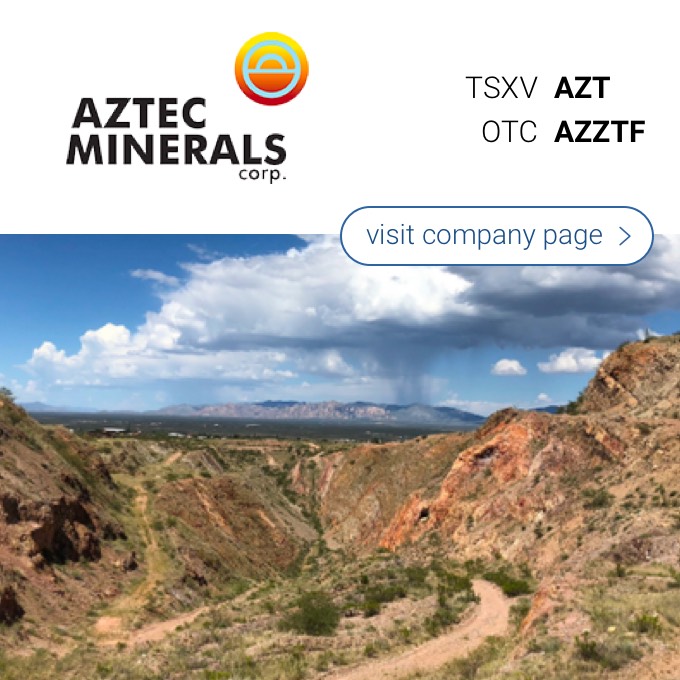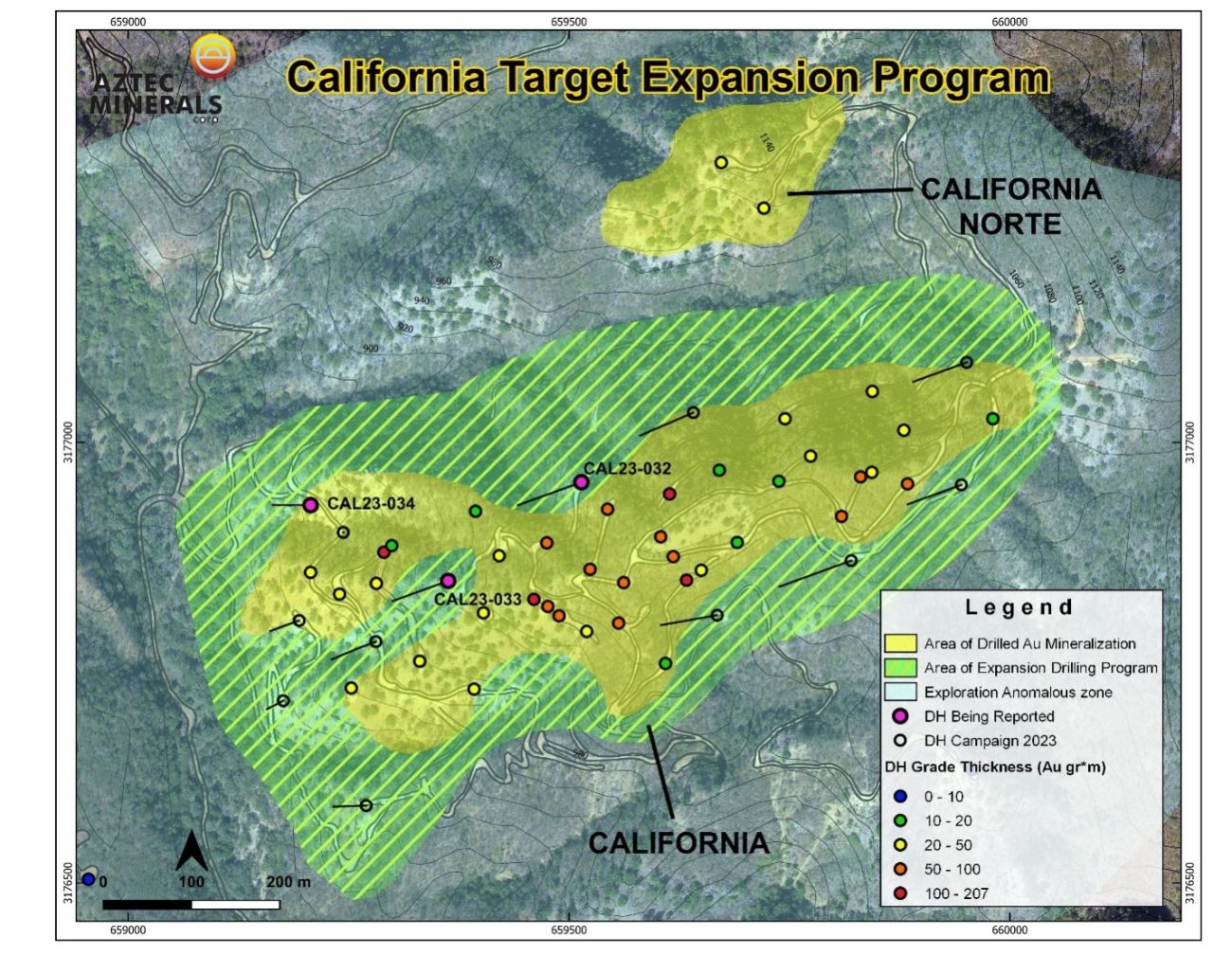
Aztec Minerals (AZT.V) has released the assay results of the first three of a total of thirteen holes it drilled on the Cervantes gold project. All thirteen holes (for a total of almost 1,640 meters) were drilled at the California gold zone in an attempt to further expand the mineralized area. As you can see below, all three holes have hit gold. While 7.6 meters containing 0.274 g/t I hole CAL23-032 and 13.7 meters of 0.338 g/t gold in hole 033 are a bit light, we are positively surprised by the results of hole CAL23-34.
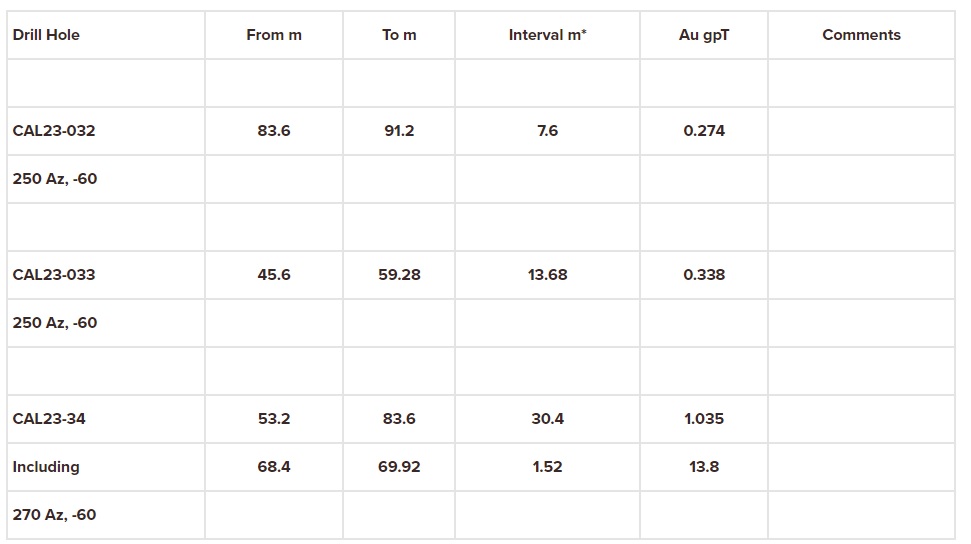
As you can see on the image below, that hole was drilled on the northwestern edge of the mineralized system and not only did the drill bit encounter 30.4 meters at an average grade of just under 1.04 g/t gold, it also contained one high-grade interval of approximately 1.5 meters with an average grade of 13.8 g/t. If we would isolate that high-grade 1.52 meter interval from the equation, the residual 28.88 meters of the mineralized interval would still contain an average of 0.36 g/t. Definitely lower grade, but in line with the grade encountered in the other two holes.
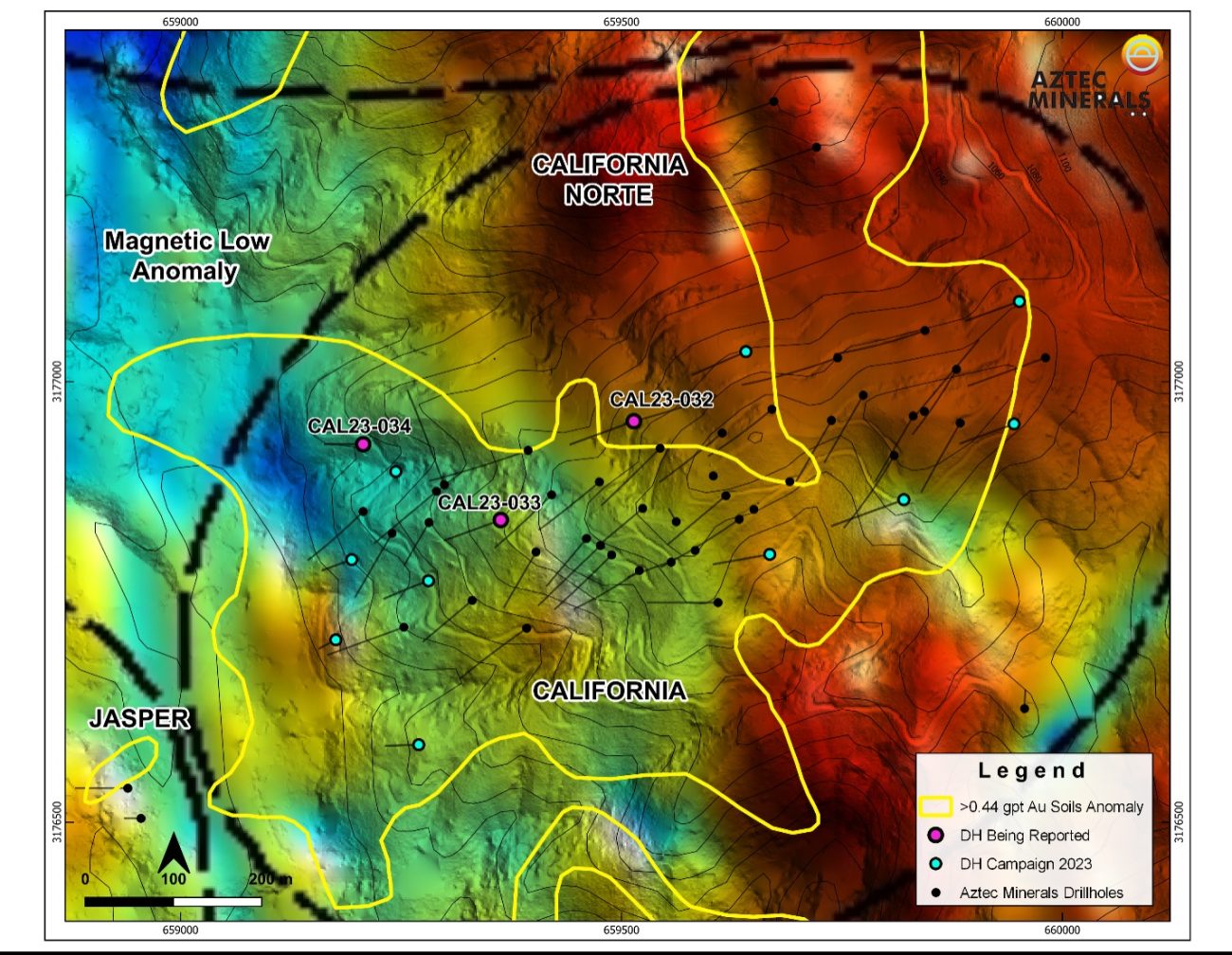
Not only is the location of hole CAL23-034 interesting, but CEO Dyakowski mentioned the hole actually ended in mineralization when it was lost at a depth of 85 meters downhole. But as the image below shows, given the angle of the hole, the mineralization actually starts less than 40 meters from the surface.
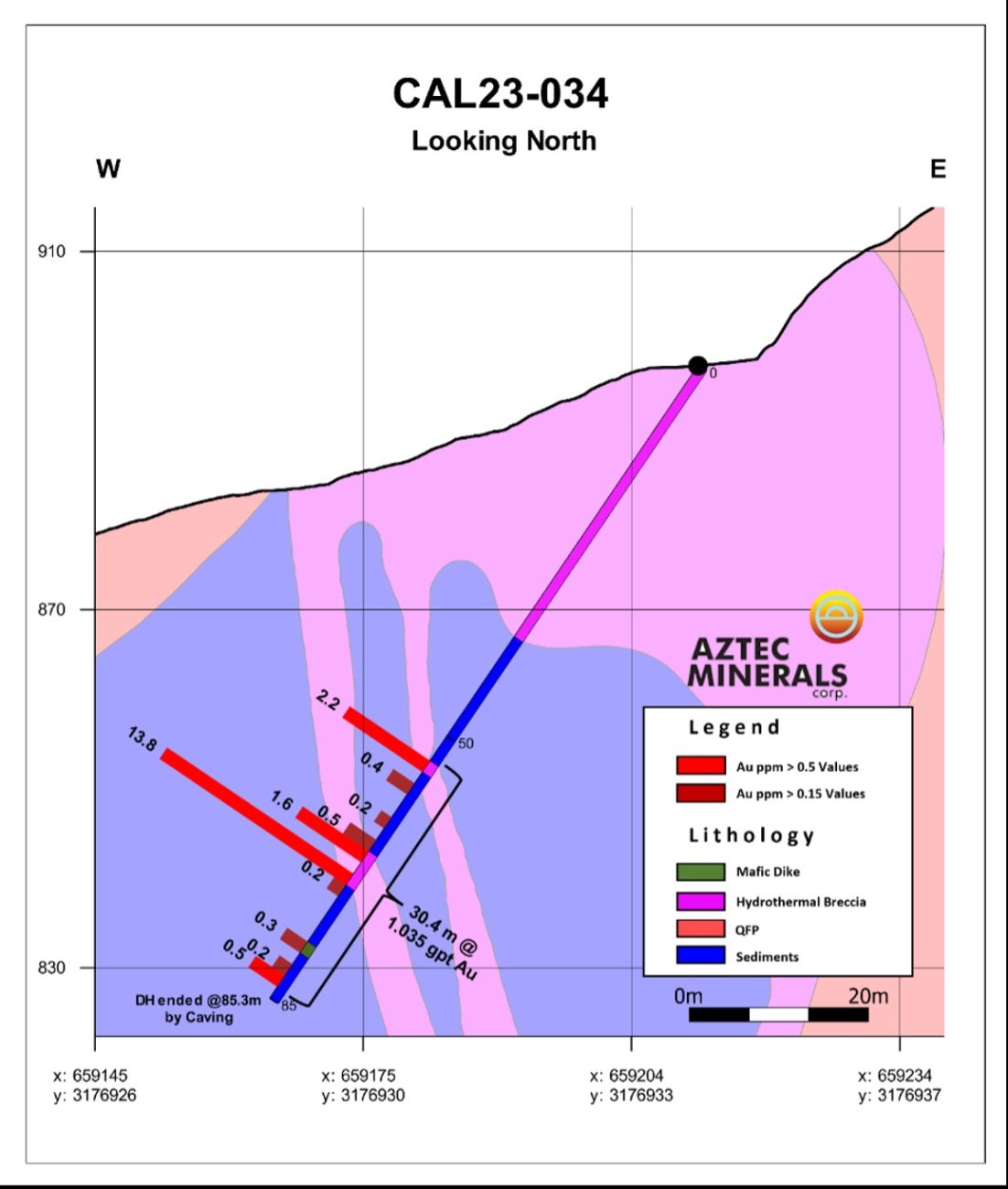
The gold mineralization encountered in hole 34 opens up the area to the northwest, an area that coincides with the geochemical soil anomaly and magnetic low geophysical anomaly.
Disclosure: The author has a long position in Aztec Minerals. Aztec is a sponsor of the website. Please read the disclaimer.
